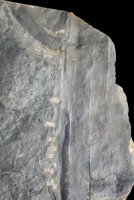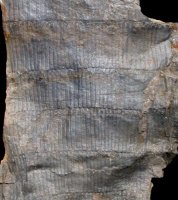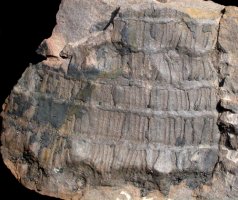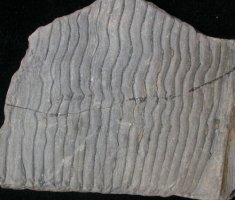Calamites
The wellknown articulated 'trunks' with longitudinal striation are in fact not trunks but fillings of the central cavity of the trunks. Wood and bark has disappeared but the filling of the central cylinder has petrified. The longitudinal lines are the prints of xylem bundles, the transverse lines are the remains of diaphragma's, like in bamboo. Sometimes however the real (smooth) surface of a trunk is found.
Four species can be
distinguished.
Calamites cistii: the sections are
longer than wide. On the nodes scars of branches are only seldom present.
A common species.
Calamites suckowii: the sections are wider
than long. In this species too there are hardly ever scars of branches on
the nodes. Rather common.
Calamites goeppertii: the branch
scars form a complete ring on some of the nodes. The successive nodes have
about the same distance to each other.
Calamites undulatus: the longitudinal
lines are undulating. It is thought that these waves are a secundary phenomenon,
i.e. they came into existence during the process of fossilisation. The sections
are different in length: the shortest ones are situated on top, the longest
ones to the bottom. The branch scars on the nodes do not form a complete
ring, maar are placed rather at random.
Click on the photos below to see an enlargement.



